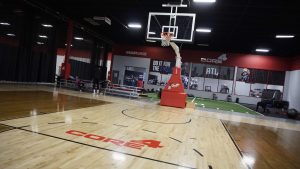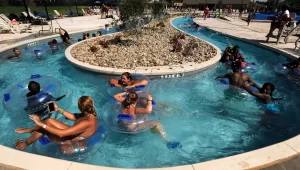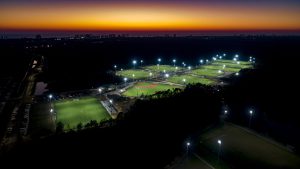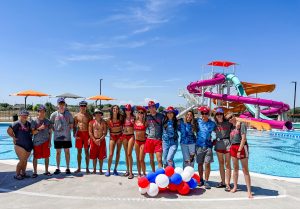There’s one facility in your community that’s linked to better health, higher property values, and higher test scores. A place that may provide free meals for students and exercise programs for seniors. A building that can serve as a gathering place for the community.
Recreation centers have the power to transform the physical well-being of individuals and the economic outcomes of the community as a whole. From afterschool programs to fitness classes, recreation centers are a hallmark of a healthy and vibrant community.
However, great recreation centers aren’t built in an instant. A multi-step recreation planning process, involving the community and key stakeholders, is required for the vision to be realized. At Sports Facility Advisory, our team of architects, researchers, facility operators, and business analysts provide a wealth of recreation center planning experience. We can help your community develop a plan that’s aligns with the needs of your community and execute it effectively and efficiently.
Recreation Center Planning Steps
The best recreation centers are a result of excellent planning. Below is a step by step guide that will move your community from concept to the opening of a community-defining recreation center.
Step 1: Engaging your Community
A recreation center can’t succeed without a vision and that vision should come from the people who will benefit most. The members of your community must have a central role in the recreation planning process. Conversations both online (via surveys and social media) and in-person (via town halls) should pose questions about the level of satisfaction with the current recreation center offerings, the overall direction the communities recreation spaces, and options for future programming. While there may be many opinions voiced, it’s important to identify what’s most important to your community in terms of facilities and programming. What does the recreation center that the community needs most look like? What activities take place within its walls? It’s also critical to consider how your community’s needs will evolve. What will your community want from recreation spaces in five years? Or ten years? With these answers, a vision is developed. This vision becomes the standard-barer from the other parts of the project.
Step 2: Assessing Political Will
Beyond engaging your community, receiving buy-in from local elected officials is a key piece of recreation planning. Plans for optimizing recreation assets may be sound, backed by data, and in the interest of the community, but unless it’s supported by key decision makers that can gather the resources necessary to implement it, the plan will likely stall. Are city council members, the mayor, and the city manager in support of the optimization of recreation assets? Their endorsement is instrumental in attracting partners to the project.
Step 3: Examining your Current Recreation Center Assets and Determining Needs
As communities evolve, so should the facilities that serve them. For example, if there’s an influx of families moving to your community, it’s critical that your recreation center is built to enhance their lives. While providing programming such as summer camps and fitness classes are important, providing tech amenities such as free Wi-Fi and physical amenities like playgrounds are essential.
Recreation center assets also have an opportunity to meet the needs of the less fortunate. According to the National Recreation and Parks Association, parks and recreation departments serve approximately 560 million meals to children each year through summer and after‐school programs.
Step 4: Creating a Plan
The synthesis of the input you’ve received from the community and stakeholders are the goals. The current state of your recreation assets are the baselines. In between lies a gap that your recreation plan will fill. A number of components must be considered during this process, including the overall scope and concept for new or renovated facilities, selecting sites for new facilities, project financial feasibility, facility development, market opportunity assessment, programming, and determining key performance indicators.
Step 4: Seek Funding
If your recreation center planning involves the construction of a new facility or the renovation of a current one, funding will be required. When working with SFA, we conduct both a market opportunity report and a feasibility study to help determine the financial viability of your recreation center concept. This includes a Pro Forma, which provides a five-year cash flow projection for the facility. The Pro Forma provides prospective funding partners with a comprehensive view of the project’s ability to meet revenue goals given its business model. The Pro Forma can also be used to build political will and can support public funding mechanisms.
Step 5: Implement Plan
A key part of implementing your recreation plan is building a team to complete the project and understanding their roles. From there, a timeline is built with milestones that allow you to assess progress within the project.
Recreation centers can be a tremendous asset to your community. To unlock its potential, planning is needed. To learn more about how SFA & SFM works with more than 2,000 communities throughout the United States, contact us or call us today at 727-474-3845.






